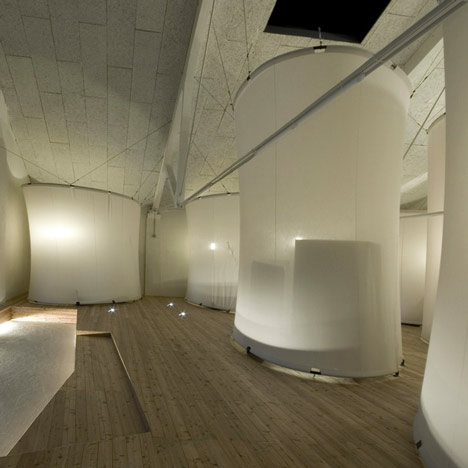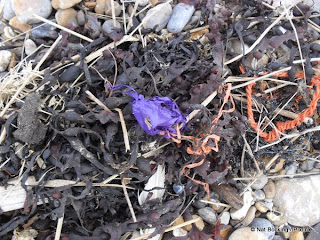You might be reading this because you have been told releasing helium latex or Mylar (even worse) balloons outdoors is a bad idea. If you don't know, well it is and you shouldn't pollute the environment by letting balloons go because they become litter and they can kill animals. Helium is scarce and non-renewable; so it's best left for using in MRI scanners to save lives. Even so called 'biodegradable' latex balloons will kill wildlife and domestic animals and it leaves a mess as it slowly rots. You would get a fine for dropping an apple core, so what's so different about one balloon or hundreds of them?
Here endeth the lesson on that. But you might be a balloon release organiser who have already sold tags and balloons and advertised a balloon release before you learned the error of your ways and to cancel it now would be a downer and you would lose money and lose face*. So what can you do instead?
You can organise instead a balloon hunt. You need exactly the same equipment but I think this way is more fun and it's cheaper too as you fill the usual 12 inch latex balloons with air, not expensive helium. It not based on the Balloon Fight video game but it has that kind of energy and it's probably a bit easier to get people to participate in than a water balloon fight.
What you do:
You attach the tags you've sold which have the buyers' name and address to lots of balloons.
You have people also pay or volunteer to enter the competition to become balloon hunters. They can be teams or individuals going for special prizes too. They could dress up as pirates or cowboys or video game characters to add value to the spectacle for the audience.
INSIDE a gymnasium, hall or whatever indoor space you have, you can set up an obstacle course. They could be gym equipment or just cardboard boxes and mats. It isn't a HSE nightmare.
The balloon hunters line up at a starting position, ideally some way from where the balloons are going to be dropped.
On a signal the hundreds of balloons with tags you have sold are dropped from a net at a height, or if you can't rig that, tipped out with some people to waft boards or use fans to disperse the balloons. The players rush to catch the balloons. Much fun for all ensures in the melee. Players pop the balloons to collect as many tags as they can find.
When filled with air the balloons will be scattered around by the people rushing around to catch and burst as many balloons as they can. The audience can be involved in pushing stray balloons back into the field of play.
The hunters have to collect tags, they could have a bucket or box they deposit the found tags in. One by one the balloons diminish and soon the players are chasing the last few balloons, which are probably the hardest to reach.
After a given time or a signal by the referee, the game stops or when the last balloon is caught. The hunter with the MOST tags retrieved wins a prize and or acclaim. The tag on the LAST balloon found wins a prize for the purchaser, like the furthest balloon traveled or the first one home. The remainder of the tags could be put in a drum and drawn for prizes as a raffle so everyone's a winner.
If you play the game without tags, you can weigh the balloon debris collected to determine the winner.
This game has very strong elements of pursuit and survival which excite the audience and challenge the players. They are also strong metaphors. The players will want to get as many balloons as they can to win so they will want to continue to hunt until the last balloon is found. The raffle entrants are betting that their balloon is the best survivor. Everyone taking part can honour a cause by participating if the game is fundraiser or memorial event. Playing a game as a memorial or to honour people has a history going back millennia. Watching people playing an active game is a much healthier message than just watching balloons go off, as twenty seconds of wonder leads to years of harmful litter.
The obstacles for the hunters to manoeuvre can be simple or complex or not done at all but this adds another element of challenge. You can have "shark infested custard": areas that are off limits to the balloon hunter to step into so if a balloon goes there, they have to use their ingenuity to retrieve the balloon. Jumping and waving of arms and teamwork can be used here to get the last balloons. Random challenge balloons can be introduced too during play. You might set obstacles as a maze or platforms, making a giant video game with other people as adversaries that can 'tag' the hunters and steal their points.
You could set out an obstacle course and enforce that the hunter has travel across it to take each balloon with its tag back to their starting position before getting another. This works if there are only five to ten balloons per player or it can be introduced as a challenge in a second round if you want.
This game would work really well in a swimming pool where the hunters would have to swim to catch the balloons (though pieces of latex might clog the filters - check with your pool).
There are many other ways to vary elements of the game. It's wide open for imagination to keep it fresh every time and place it is played.
Fundraising balloon releases are usually a race to see which balloon goes furthest and requires a kind hearted person to return the tag they find and a wait of several days to declare a winner, if at all. In these days of instant gratification, this game delivers the winners as soon as you want them.
*If you can't change your plans, consider there's nothing more inspiring to others than admitting your mistake and cancelling an outdoor balloon release because of the environmental harm, rather than spin PR that the balloons will be "biodegradable" without strings and so on. To persist with that calumny will perpetrate further and less careful imitations. To admit a painful mistake, before others called you on it, will win admiration for integrity for you and your cause.
Zilch.org.uk offers this eco-friendly alternative to a Balloon Release - the Virtual Balloon Release.
Have three cheers and on each cheer have everyone raise their arms to the sky.You can use the twitter hashtag #balloonrelease for links and info and you can share this page with http://tinyurl.com/balbtr
On the last cheer, as well as raising their arms to the sky everyone keeps their arms up and gazes upwards to consider the what's being celebrated.
The challenge is then to see who lasts the longest in this position.
The final person to have their arms raised is then given a hearty clap when they are unable to hold their arms up any longer.
This would be good for the soul and for everyone's health!
Of course, people could still be holding their balloons, just as long as they weren't to let them go!


























